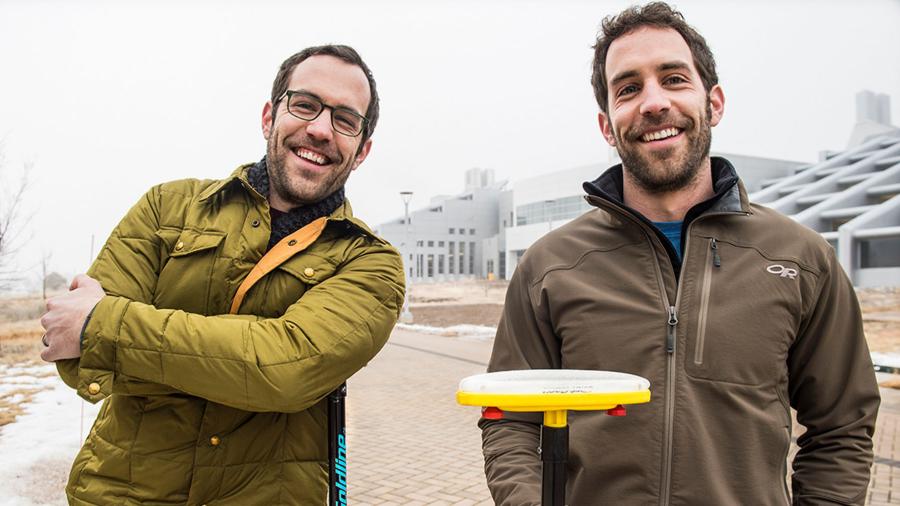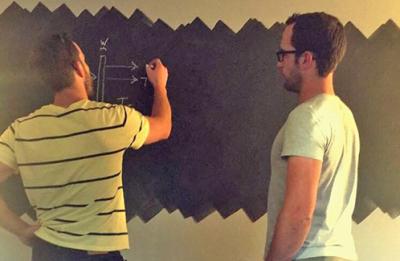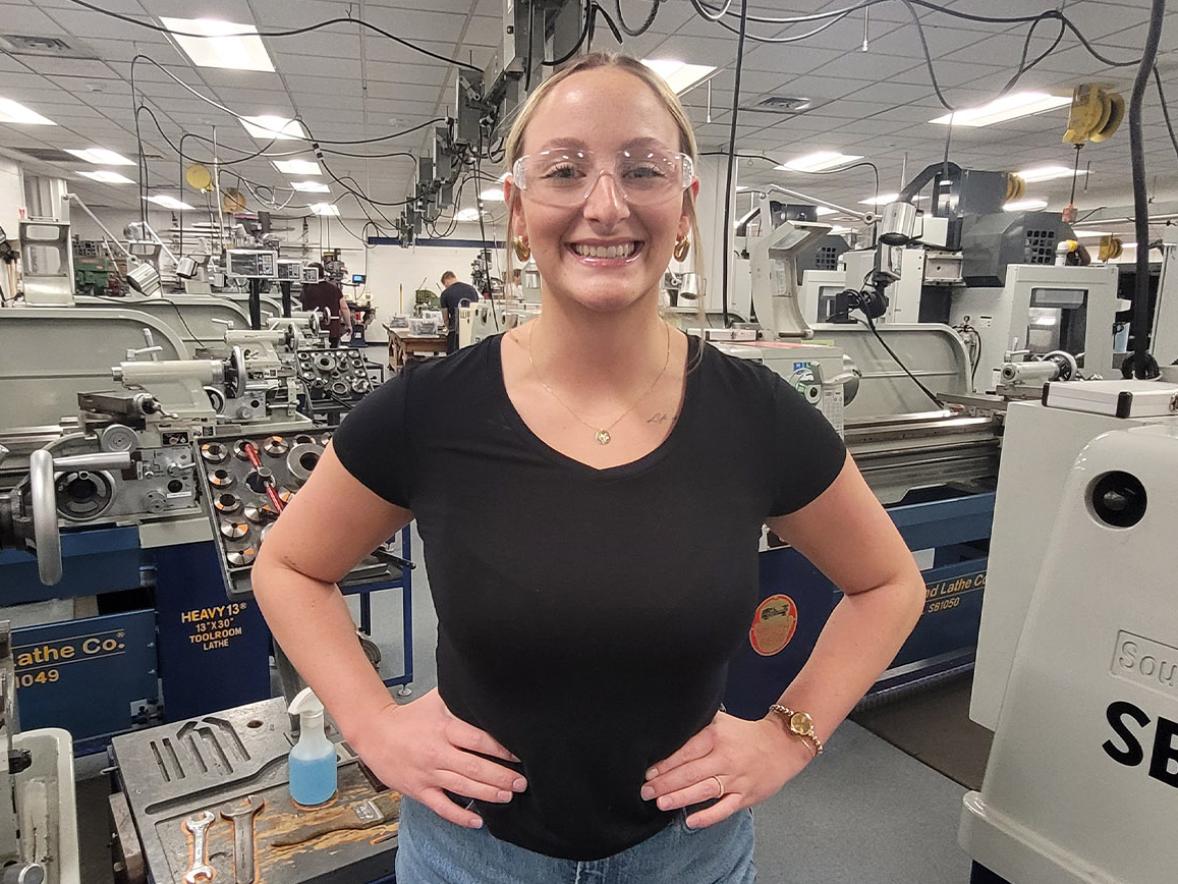Just over a year ago now, University of Wisconsin-Stout Assistant Professor Vincent Wheeler stopped in Denver to visit his twin brother, Lance.
Lance is a research scientist at National Renewable Energy Laboratory who has developed a switchable photovoltaic (PV) window that darkens and generates electricity when sunlight hits the window. He was working on the math involved in modeling a PV window and was considering such issues as solar heat gain and efficiency.

“There is a lot of glass surface in buildings,” Vincent said. “We think there is a huge opportunity to get renewable energy where people live and integrate it where they are living. The windows could be an electrical generator for the building. It has to make economic sense, which is a huge challenge with moving new technology forward.”
Working on a wall covered in chalkboard paint at Lance’s home, Vincent and Lance started creating the math and science looking into the future of PV windows. An article that sprang from that wall was published in August in the academic journal ACS Energy Letters.
In the article, they note it’s important to understand the trade-offs that must occur in selecting a PV window. While a darker window can capture more light, thereby producing more electricity, it allows less light through so the illuminated space in the building will be darker.
In a hot climate, a PV window should have a darker tint to help avoid solar heat gain. In a cooler climate, solar heat gain is a plus because that offsets the cost of heating a building. To complicate matters further, the most efficient PV absorber material may not be a neutral gray; it may be a color that gives an orange or red quality to incoming light, Vincent said.
“Traditional solar panels have a simple job to absorb as much sunlight as possible and turn it into as much electricity as possible,” Lance said. “When you think about solar windows, there is more to take into account.”
Buildings account for 75% of electrical power usage in the U.S. and 40% of other energy use for heating, Lance said. “If you can generate electricity and offset some heating and cooling in a building, you are making a big difference in the energy landscape in the U.S.”
Vincent provided knowledge on thermal science and Lance on PV windows during their collaboration.

Lance, who has worked at NREL for about five years, said working with his twin meant a lot to him.
“It has been a long time coming,” Lance said. “We started down the path when we both started scientific research. We always talked about an article by Wheeler and Wheeler. We have so many common interests. I would like to continue to work together. We work really well together. There are opportunities for theoretical work. I would like it if some of his students could come to NREL and continue to improve what students can do at UW-Stout.”
Vincent, who has taught at UW-Stout about 1½ years, teaches undergraduate mechanical engineering students thermal sciences, fluid mechanics and solar thermal technologies. “I like Stout because it lets me teach what I am passionate about,” he said. “It is a small setting, so I know the names of my students and they know me.”
Vincent and Lance worked together at the NREL in 2014 as postdoctoral researchers. Lance focused on materials science and Vincent on computational science. Vince left NREL at the end of 2015 and spent most of the next three years researching solar thermal engineering and solar thermochemistry at the Australian National University.
Growing up near Minneapolis, the twin brothers always got along. They played on the same hockey team, attended the same college and graduate school and both enjoy curling. Born on Dec. 26, 1984, Vincent is four minutes older than Lance. After high school, they both signed on to play for the Bancroft Hawks, part of the Ontario Junior Hockey League. From 2003-2015, Lance played defense while Vince goal tended.
They both graduated from Saint John’s University, with Vincent majoring in math and Lance in physics. In graduate school at the University of Minnesota, they both earned their master’s and doctoral degrees in mechanical engineering.
Vincent lives in Menomonie and is married to Kjersten Wheeler, who works with the UW-Stout gymnastics program and is affiliated with the youth gymnastics program, SEGA. They have two children, ages 4 and 18 months.
Switchable PV windows likely will first be seen as a luxury item in vehicles to help power electrical systems, Vincent said.
But both brothers would like to see PV windows continue to advance and hope their research helps. “I’d love to see them become more widespread in the marketplace,” Lance said.





